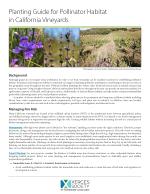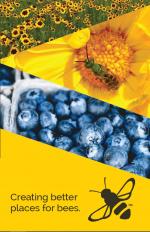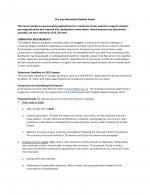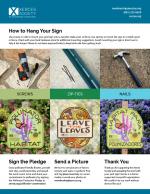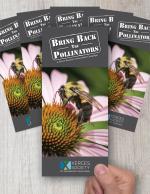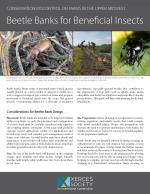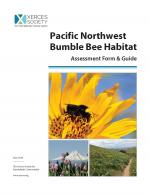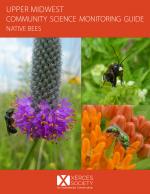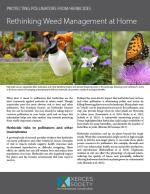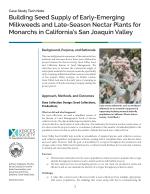As a science-based organization, the Xerces Society produces dozens of publications annually, all of which employ the best available research to guide effective conservation efforts. Our publications range from guidelines for land managers, to brochures offering overviews of key concepts related to invertebrate conservation, from books about supporting pollinators in farmland, to region-specific plant lists. We hope that whatever you are seeking—whether it's guidance on making a home or community garden pollinator-friendly, advice on developing a local pesticide reduction strategy, or detailed information on restoring habitat—you will find it here!
Find Publications
Use the search functions to sort by publication type (books, guidelines, fact sheets, etc.), location, and/or subject (agriculture, gardens, pollinators, pesticides, etc.).
Although grapes do not require insect pollination in order to set fruit, vineyards can be excellent locations for establishing pollinator habitat. Permanent and temporary habitat in vineyards can support declining pollinator populations contributing to species recovery in key geographic areas throughout the state. Pollinator habitat plantings also attract other beneficial insects such as natural enemies that prey on crop pests.
Developed by the Xerces Society for Invertebrate Conservation, with support from Oregon Tilth and the USDA’s Natural Resources Conservation Service, Bee Better Certified works with farmers and food companies to make places that are better for bees and other pollinators. This brochure serves as an informative introduction to the program.
Bee Better Certified® is the gold standard of pollinator-focused farm certification programs. Developed by the Xerces Society, the world’s largest science-based pollinator conservation organization, Bee Better Certified builds upon nearly two decades of on-farm habitat research and development.
Essays on Invertebrate Conservation
Understanding the natural history of the species we work with is the foundation of our efforts to protect invertebrates and their habitats. We at Xerces are completely enthralled by the amazing behaviors, intriguing relationships, and eye-catching beauty of these animals. This issue of Wings features bees, butterflies and wasps, and dragonflies. We hope you find them as entrancing as we do.
Application information
The Xerces Society is now accepting applications for a minimum of two awards to support students pursuing education and research into Lepidoptera conservation. Award amounts are determined annually, but are a minimum of $3,750 each.
An instructional insert explaining how to hang a Xerces sign from the gift center.
Pollinators are essential to the health of our environment and for bountiful farm crops. There are four straightforward steps that you can take to help them: grow flowers, provide nest sites, avoid pesticides, and share the word.
Conservation Biocontrol on Farms in the Upper Midwest
This fact sheet provides information on planning, locating, and installing beetle banks in the Upper Midwest, including recommended grasses and flowers that can be planted. Beetle banks are linear strips of perennial native bunch grasses that provide overwintering shelter for predatory ground beetles, spiders, and other beneficial invertebrates.
By Rich Hatfield, Ann Potter (WDFW), and Joel Sauder (IDFG)
Bumble bees are charismatic and easily recognizable pollinators thanks to their large size and distinctive striped patterns, usually of black and yellow, but often with stripes of red, orange, or white. They play an incredibly important role in keeping our environment healthy by pollinating flowers in natural areas and by contributing to successful harvests on farms.
Developed for community scientists (sometimes referred to as "citizen scientists") to document how native bee communities change through time in pollinator habitats. It includes an introduction to bee identification, an overview of biology, tools for identifying different groups of bees, and observation datasheets.

